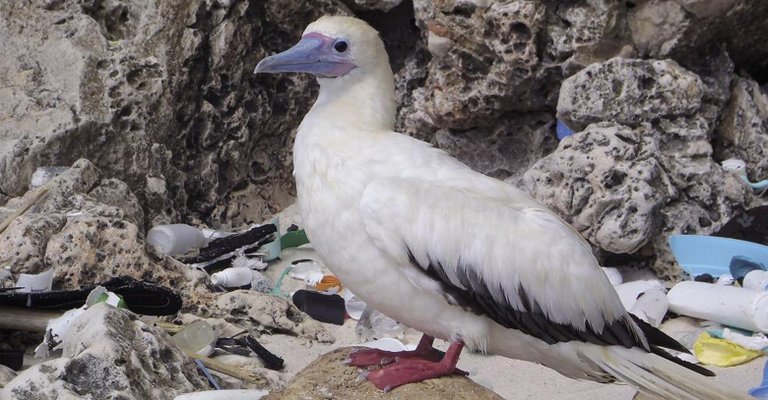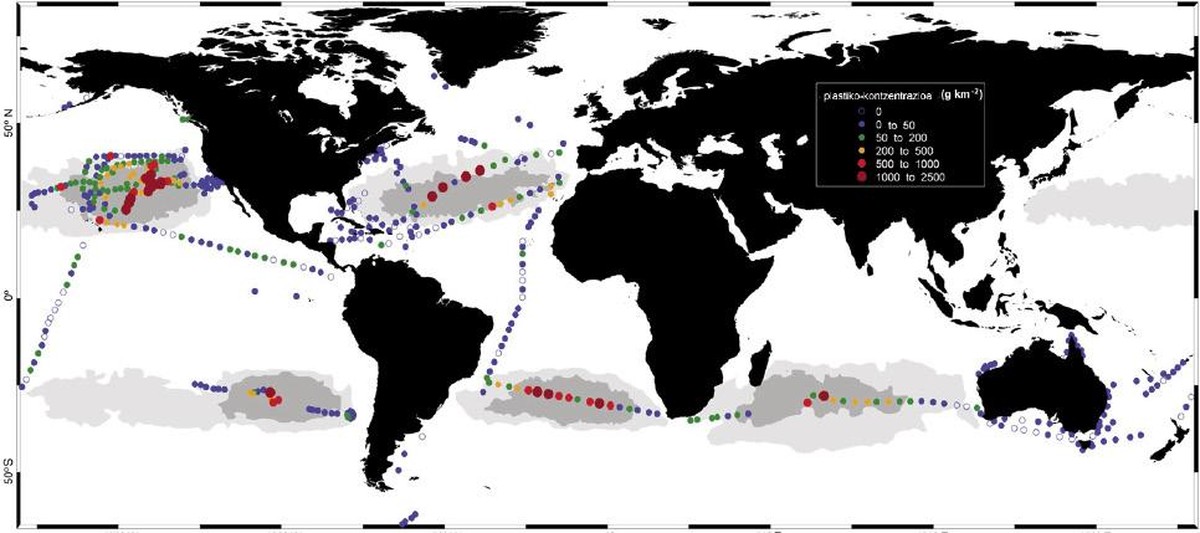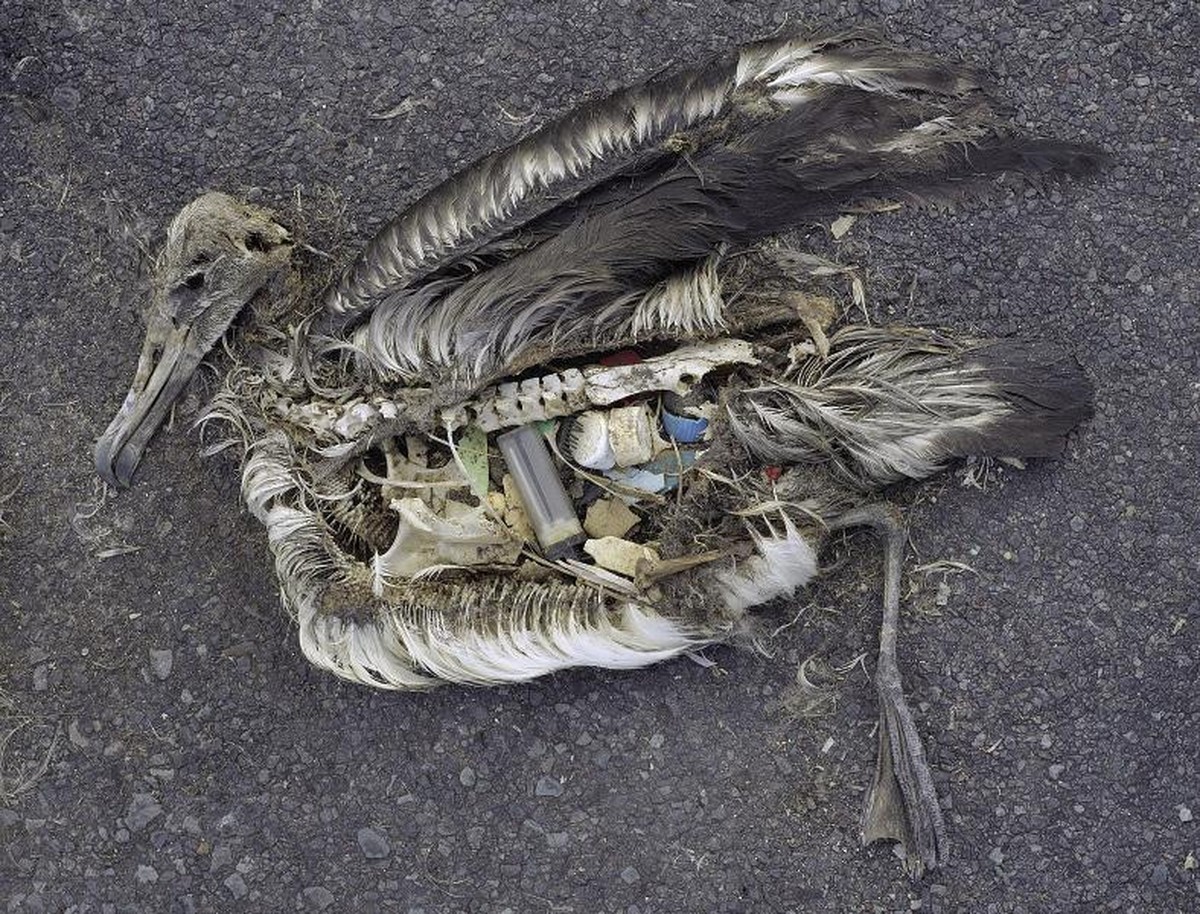A sea of plastic

According to Manu Soto López, deputy director of the Maritime Station of Plentzia, “those who do not see are more worrying than those who see themselves”. The Maritime Station of Plentzia is the research center of the UPV/EHU in Marine Biology and Experimental Biotechnology, whose main objective is to investigate the interaction between the sea and ecosystems and human health. Within it, it is being investigated on marine microplastics, to which it refers what Soto said at the beginning.
He explains that marine pollutants are investigated in the Maritime Station: “In recent years we have been researching metals, hydrocarbons, nanoparticles... and now we have started with microplastics. In fact, they generate more concern and taking advantage that the European Union offers grants to investigate its impact, we have addressed the world of plastics.”
The presence of a gigantic plastic island in the north of the Pacific is well known. “And it’s not the only one,” says Soto. “There are at least five large islands, right in the places where the currents converge and turn. Besides the North Pacific, in the South there is another, another in the North and South Atlantic, and the fifth in the Indian, between Australia and Africa.”
The Malaspina expedition unveiled these islands through an article published last year in the magazine PNAS ( Plastic debris in the open ocean ). The main plastics found during the expedition were polyethylene and polypropylene, the most commonly used polymers on a daily basis. And they warned that the plastic accumulated in these five zones is only part of what leaves to the sea. That is, there is much more than you have seen.
In fact, in addition to plastic islands, the researchers observed microplastics and discovered signs that microplastics are passing to the trophic chain and to the ocean bottom.
An article published by researchers from Great Britain and Catalonia in 2014 at the Royal Society reinforces suspicion of malaspins. According to him, the seabed is one of the main microplastics deposits ( The deep sea is a major sink for microplastic debris ). In fact, in studies carried out in the Atlantic Ocean, the Mediterranean and the Indian Ocean, microplastic fibers were four times more abundant in the sediments of the seabed than in contaminated surface waters.
From land to sea
As for the origin of the plastic, Soto has no doubt: “The plastic that appears in the sea is the one we use and we all throw.” Last February, the first study was published in the journal Science to calculate the amount of plastic that goes out to sea (Plastic waste inputs from land into the ocean). Elaborated by an international group, according to which, in 2010, between land and sea reached 4,8-12,7 million tons of plastic.
This calculation has been carried out relating the quantity, population density and economic level of solid waste worldwide and has calculated that in 192 coastal countries 275 million tons of plastic waste were generated in 2010. The conclusion is that 1,75-4.6% of this amount reaches the sea, mainly because the waste management is not adequate or sufficient.
The article includes the list of the 20 countries that pour more plastics, headed by China. Below are Indonesia, the Philippines, Vietnam and Sri Lanka, and later other African countries such as Egypt, Nigeria or the Republic of South Africa. The last place on the list is the United States.
Looking ahead, if waste management is not improved, the authors have announced that by 2025 the amount of plastic that is thrown will be 10 times higher than in 2010. What's more, they believe that up to 2100 will increase, especially in Africa and cities.
Faced with this, they propose long-term solutions at the end of the article. According to them, “it is essential to improve waste management infrastructure in developing countries, which will require many resources and times. As this infrastructure develops, industrialized countries can begin to take [measures] quickly, reducing waste and the growth of single-use plastics.”
However, according to data from the European Association of Plastics Producers of the 2014-2015 report, in Europe, despite the decrease in production due to the crisis, is maintained (57 million tons in 2013, as in 2012). World production is increasing (299 million tons in 2013, 288 in 2012).
In fact, plastic is used in everything, even in products that are not consumer conscious, such as toothpaste and other cosmetics. Researchers from US universities have warned that plastics used in cosmetics are the same size as plankton. Thus, when arriving at the sea, the animals that feed on plankton feed and pass to the trophic chain. In view of this, it has been requested that by 2020 the use of particles under 5 millimeters in cosmetics is prohibited.
Visible conclusions Visible conclusions
The basement coincides with the establishment of plastic delimitation standards: “Everyone can do a lot, but that’s not enough. We need effective and rigorous policies. We should act in two directions: from bottom to top and from top to bottom.” Because the damage they generate is evident: “Over time plastic is degrading by creating a kind of micro gel and nanoplastics. Some fish species eat this material that is found in the water and die a lot because plastic accumulates in the digestive system or in the gills or is toxic.”
The fish are not the only ones harmed. The CSIRO of Australia and the Imperial College of London have studied the influence of plastic waste on marine birds and have calculated that currently about 90% of marine birds of all species have plastic waste in the stomach and that in 2050 almost all (99%) will have them.
Soto's team, in collaboration with the Swedish Natural History Museum (University of Stockholm), is investigating the consequences of micro- nanoplastics on marine animals. In fact, they have a collection or species bank (ESB) of Stockholm with samples collected for 30 years. This allows to perform retrospective analysis and compare those of a place with others. “That is why we are with them,” said Soto, “because we also have our bank (BBEB).”
It is now being investigated in the quantity and distribution of microplastics, in cells and tissues of mussels, and seeing the consequences of this invisible material in their health. According to Soto, “the objective is to create adequate tools for these investigations. For example, we use microscopes with polarized light, thanks to which some invisible things with visible light are visible.” Once this equipment is prepared, we will proceed to research the banking samples of Stockholm, in order to be able to go back in time and check when the microplastics began to appear in marine animals.
According to Soto, at present in Europe there is a great interest to know the influence of microplastics, and proof of this is to promote this type of research. Looking ahead, he considers that the conclusions of these studies should serve to create and implement regulatory policies. “If it is necessary I am very optimistic, but I think it is my desire,” Soto confessed.
Buletina
Bidali zure helbide elektronikoa eta jaso asteroko buletina zure sarrera-ontzian














